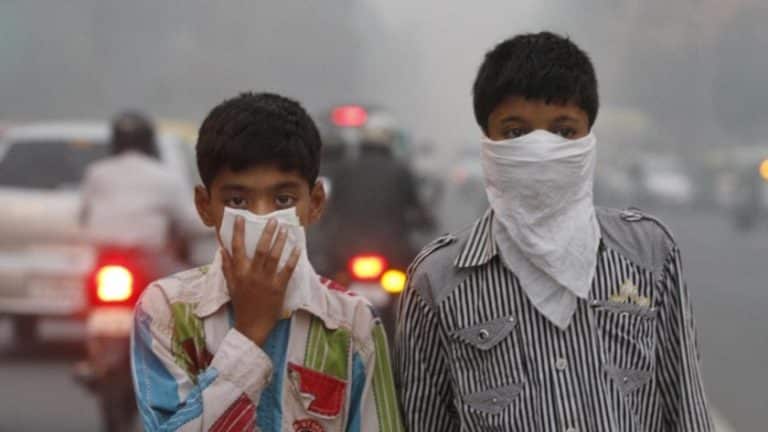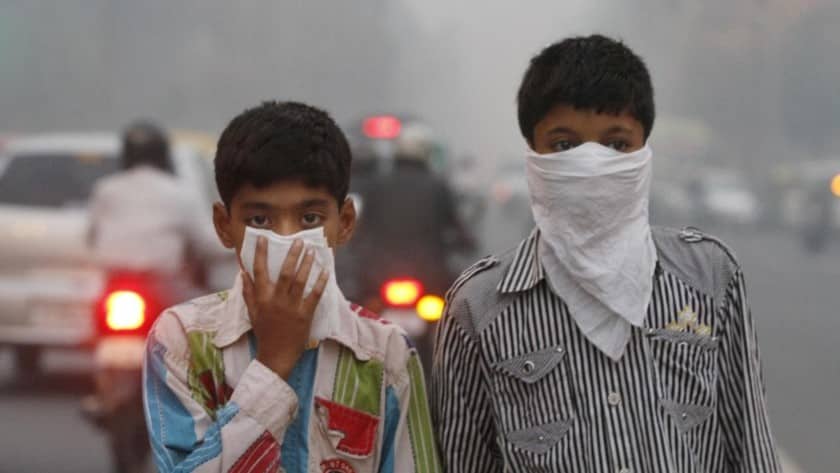
DELHI FACES A LOCKDOWN FOR AIR POLLUTION: The role of agriculture, and why can primary sector become an ESG investment opportunity
Schools and offices closed, construction sites activities suspended, limitations to trucks circulation. These measures are not adopted to fight the pandemic, but another powerful enemy in Delhi: air pollution.
The pollution level in the Indian capital is unhealthy during the whole year but in October-November the pollution exceeds 20 times what is considered to be safe by the WHO.
Among the main causes we can find agriculture from near states, like Punjab and Haryana. In those states crop stubble is frequently set on fire during this period. Farmers resort to this solution because it is forbidden to plant rice before mid-June to prevent excessive water exploitation. This means that there is less time to prepare the new cultivation, and the quickest way is to burn the rests of the previous one. This behavior causes high smoke clouds going down towards Delhi.
Another factor is geography: the Himalayan mountains make a sort of barrier that prevents the smoke to escape towards the north. Furthermore, in those months, cold mountain air rushes down towards the capital. This cold air moves under a layer of warmer air coming from the lowland, creating a trap for pollution.
Another main cause is the massive increase in population (by more than 7 million in 10 years). This obviously means a higher population density, more cars moving round the city, more factories.
All these contributions make Delhi so contaminated that breathing its air for a day is equivalent to smoke 50 cigarettes -according to experts.
Yet, one question arises: why has India been so conservative during COP26, despite being so touched by these phenomena?
Together with other countries like China, India was among the promoters of the “watering down” change of wording (from phasing out to phasing down) with respect to the coal usage.
Dealing with carbon neutrality, India has made a small step further, but the 2070 term is not considered to be enough by many.
India is the third country that pollutes the most in absolute terms. In relative terms, anyway, the numbers decrease considerably: there are 10 nations that emit more greenhouse gas than India per capita (countries like Korea, Japan, Iran and Canada, in addition to US, China and Russia). This leads us to the main point that India held at the Glasgow meeting: as a developing country it should have the possibility to use fossil fuels like other countries did in the past, when industrializing.
The growth in India is rapid both at economic and demographic level, but it is not sustained by an adequate modernization.
How can this situation be improved?
The emissions in India, as ascertained by the Glasgow meeting will not have a radical change overnight.
Population growth is a difficult element to control, too.
Farmers, from their side, will not stop burning because it is the only way to get rid quickly of the old cultivations before the new season. It will have serious consequences on their profits.
Anyway, the cultivation techniques are still very underdeveloped. Among the main problems there are fragmentation, poor mechanization and, in general, lack of funds and capital.
This can be an opportunity for investments by the government, which can both increase the productivity of its primary sector (continue on the path of development for the economy) and bring relief to its capital’s population that has been living in poor air conditions for years.
Not only the Indian government can benefit from this situation, but also private investors. In the ESG field, investments in agriculture did not play the main role up to now, but it is gaining more importance as studies are confirming that the primary sector has an important effect on emissions all over the world.
(We made the example of rice in India, but also the livestock farming has an important effect on Co2 emissions)
Investments in agricultural technology can improve the work conditions of small farmers and increase the productivity of the sector, providing important returns, while helping the planet by reducing emissions.
This is still a complex sector and it is not easy to invest in it, especially for small investors, since there aren’t many targeted mutual funds or exchange-traded funds for sustainable agriculture.
According to the CEO of USFRA (an American network of farmers and ranchers) sustainable agriculture is at the stage renewable energies were in 2007 – therefore with plenty of room for improvement.
With the adequate set of political measures and regulations, sustainable agriculture can really prove to be a new important source of profitable opportunities, and make a difference at social and environmental level.
Author: Salvatore Aiello
DELHI FACES A LOCKDOWN FOR AIR POLLUTION: The role of agriculture, and why can primary sector become an ESG investment opportunity
Schools and offices closed, construction sites activities suspended, limitations to trucks circulation. These measures are not adopted to fight the pandemic, but another powerful enemy in Delhi: air pollution.
The pollution level in the Indian capital is unhealthy during the whole year but in October-November the pollution exceeds 20 times what is considered to be safe by the WHO.
Among the main causes we can find agriculture from near states, like Punjab and Haryana. In those states crop stubble is frequently set on fire during this period. Farmers resort to this solution because it is forbidden to plant rice before mid-June to prevent excessive water exploitation. This means that there is less time to prepare the new cultivation, and the quickest way is to burn the rests of the previous one. This behavior causes high smoke clouds going down towards Delhi.
Another factor is geography: the Himalayan mountains make a sort of barrier that prevents the smoke to escape towards the north. Furthermore, in those months, cold mountain air rushes down towards the capital. This cold air moves under a layer of warmer air coming from the lowland, creating a trap for pollution.
Another main cause is the massive increase in population (by more than 7 million in 10 years). This obviously means a higher population density, more cars moving round the city, more factories.
All these contributions make Delhi so contaminated that breathing its air for a day is equivalent to smoke 50 cigarettes -according to experts.
Yet, one question arises: why has India been so conservative during COP26, despite being so touched by these phenomena?
Together with other countries like China, India was among the promoters of the “watering down” change of wording (from phasing out to phasing down) with respect to the coal usage.
Dealing with carbon neutrality, India has made a small step further, but the 2070 term is not considered to be enough by many.
India is the third country that pollutes the most in absolute terms. In relative terms, anyway, the numbers decrease considerably: there are 10 nations that emit more greenhouse gas than India per capita (countries like Korea, Japan, Iran and Canada, in addition to US, China and Russia). This leads us to the main point that India held at the Glasgow meeting: as a developing country it should have the possibility to use fossil fuels like other countries did in the past, when industrializing.
The growth in India is rapid both at economic and demographic level, but it is not sustained by an adequate modernization.
How can this situation be improved?
The emissions in India, as ascertained by the Glasgow meeting will not have a radical change overnight.
Population growth is a difficult element to control, too.
Farmers, from their side, will not stop burning because it is the only way to get rid quickly of the old cultivations before the new season. It will have serious consequences on their profits.
Anyway, the cultivation techniques are still very underdeveloped. Among the main problems there are fragmentation, poor mechanization and, in general, lack of funds and capital.
This can be an opportunity for investments by the government, which can both increase the productivity of its primary sector (continue on the path of development for the economy) and bring relief to its capital’s population that has been living in poor air conditions for years.
Not only the Indian government can benefit from this situation, but also private investors. In the ESG field, investments in agriculture did not play the main role up to now, but it is gaining more importance as studies are confirming that the primary sector has an important effect on emissions all over the world.
(We made the example of rice in India, but also the livestock farming has an important effect on Co2 emissions)
Investments in agricultural technology can improve the work conditions of small farmers and increase the productivity of the sector, providing important returns, while helping the planet by reducing emissions.
This is still a complex sector and it is not easy to invest in it, especially for small investors, since there aren’t many targeted mutual funds or exchange-traded funds for sustainable agriculture.
According to the CEO of USFRA (an American network of farmers and ranchers) sustainable agriculture is at the stage renewable energies were in 2007 – therefore with plenty of room for improvement.
With the adequate set of political measures and regulations, sustainable agriculture can really prove to be a new important source of profitable opportunities, and make a difference at social and environmental level.
Author: Salvatore Aiello
RELATED
Regulatory Developments in ESG Reporting and Their Implications for Businesses
The focus on Environmental, Social, and Governance (ESG) factors has surged, leading to significant regulatory changes worldwide. Key developments include the EU’s Corporate Sustainability Reporting Directive (CSRD), the US SEC’s...
Read MoreThe Earthshot Prize 2022
The Earthshot Prize 2022 The Earthshot prize is an award given to five winners that created some projects that could help our planet face some of the most important challenges...
Read More

